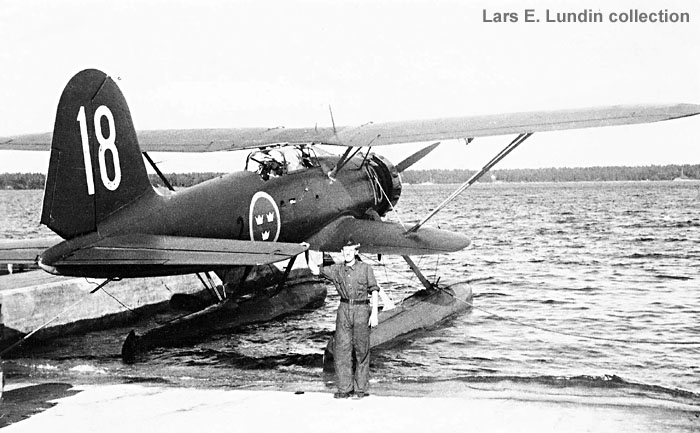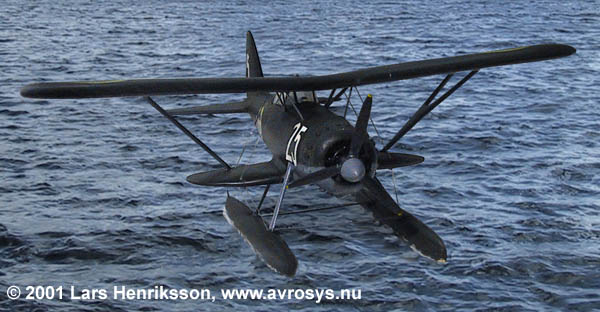|
|
||
|
S
12- Heinkel He 114A (1941-1949) |
||
| Page 1 (2) | ||
|
|
||
 |
||
|
The career of the S 12 as a maritime reconnaissance aircraft in Sweden was
short - hardly three years. TheHeinkel He 114 had
been test flown at Warnemünde in 1938 by the later General Nils
Söderberg and the Heinkel
Company offered the aircraft to a favourable price. In 1935, the German Reichsluftfahrtsministerium (RLM) wanted a more advanced successor for the Heinkel He 60 floatplane. Three aircraft builders were contracted to develop the new sea and coast reconnaissance aircraft. Arado designed the Ar 95, Focke-Wulf the Fw 62 and Heinkel the He 114. RLM preferred the He 114. The He 114 was an unusual aircraft. It was a biplane, but with the lower wing of a very short span and an elliptical leading-edge platform. This was a compromise between the good flying characteristics of a biplane and the low air resistance of a monoplane. The top wing was fixed to the fuselage with N-struts and the interplane bracing consisted of angled Y-struts. The aircraft had two floats and had accommodation for a pilot and a gunner/observer. The cockpit for the latter was facing rearwards. The He 114 showed poor water and flying characteristics during the trials in 1936. Attempts to solve the problems were of course made, but the aircraft still behaved badly at take-off and landing in heavy sea. Due to these shortcomings, the type was not considered as strategically important and was consequently cleared for export. The variant sold to Sweden was designated He 114B-1. In November 1939, the Swedish Air Force ordered twelve He 114A. The aircraft got the Swedish designation S 12 (S for Spaning = Reconnaissance). Further 27 aircraft were purchased some months later. After the German invasion of Denmark and Norway in April 1940, the deliveries were stopped. The 39 He 114s intended for Sweden were taken over by the Luftwaffe. After negotiations, twelve used and dismantled aircraft were delivered to CVV (the Workshops of the Air Force at Västerås). The aircraft needed a complete overhaul before they could be taken into service. The S 12s were provided to the 2nd Squadron at Wing F 2 at Hägernäs and were as soon as possible used in the neutrality guard along the coast. The S 12 had a BMW 132 K engine, delivering 830 hp. It was armed with one fixed and one moveable 7,9 mm machine-gun. After F 2 had got the new SAAB S 17BS maritime reconnaissance aircraft, the S 12 was mostly used for training. In 1945, the remaining six S 12s were rebuilt as target tugs. Photo at top: Squadron code 18 at the Lucerna base, Västervik, in 1942. Below: model exhibited at Flygvapenmuseum. Length: 11,90 m. Height: 5,23 m. Span: 13,54 m. MTOW: 3.500 kg. Max. speed: 330 km/h. |
||
|
For the Model Builder MACH made a plastic model kit in scale 1:72 of Heinkel He 114. Click on the thumbnails for larger picture! |
||
 |
||
|
|
||
|
|
|
|
|
||
|
|
Updated 2011-03-07 |
|
|
Custom Search
|
||
